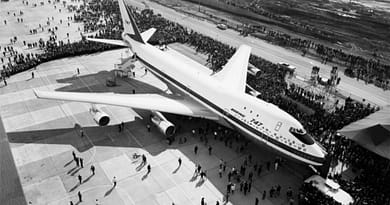Canada To Test Fly The Boeing 737 MAX Next Week
The United States Federal Aviation Administration (FAA) was the first regulatory body to test flight system revisions of the beleaguered Boeing 737 MAX. Now, Canada’s air travel regulator, Transport Canada will be conducting its own series of checks to certify it will be safe flying to Canada.
The activities will begin next week – something that carriers Air Canada and WestJet should be eagerly anticipating.
The first non-US regulator
Transport Canada will be conducting flight test activities next week in order to validate Boeing’s 737 MAX for flight in Canada. The aircraft has been grounded for nearly one and a half years, with many airlines anxiously waiting for re-certification.
Transport Canada will be the first non-U.S. regulator to conduct such activities. This follows nearly two months after the FAA’s series of certification flights at the end of June.

What will Transport Canada be testing?
While the FAA had its own list of issues, regulators in Europe and Canada have identified their own desired changes. In June, the Seattle Times reported on what the European Aviation Safety Agency (EASA) and Transport Canada will be focusing on.
There is one issue, in particular, that has reportedly bothered Transport Canada specifically: a “stick shaker” stall warning that cannot be turned off even when clearly erroneous.
Present on the 737 MAX, this alert system makes the control column vibrate forcefully in the hands of the pilot if the plane is pitched too high and is slowing toward a stall. The stick shaker is said to have been triggered erroneously by a faulty Angle of Attack signal in both the 2018 Lion Air crash and the 2019 Ethiopian Airlines crash.

For this upcoming testing, there was nothing specific mentioned by Transport Canada and thus it is unclear whether this ‘stick shaker’ stall warning has been remedied by Boeing and will be part of tests. However, the civil air regulator tells Reuters that these Canadian tests are part of its “independent review” to validate proposed changes by Boeing to the aircraft. As such, many tests will be conducted to confirm the FAA’s test results.
As for the EASA, it had issued the following statement to the Seattle Times:
“[MCAS] absolutely needs to be fixed for the plane to be recertified as airworthy … there are other issues in some way related to the sensor problem…By themselves, these would not create a safety-critical issue… It’s when they come together with something critical at the same time that it’s a major issue.” -Janet Northcote, Head of Communications, EASA
What’s next?
The regulatory body is preparing to participate in the U.S.-led Joint Operational Evaluation Board (JOEB). Reportedly planned for mid-September, JOEB’s purpose will be to evaluate minimum pilot training requirements with partners from Europe and Brazil.
Transport Canada also informed Reuters that said it would be “premature” to reveal details about the design configuration, training requirements, and flight crew procedures, before the completion of validation activity.
With these upcoming tests, do you think Transport Canada will find anything new that was not flagged by the FAA? Let us know your thoughts in the comments!
This article first appeared on https://simpleflying.com Click here to go to source




